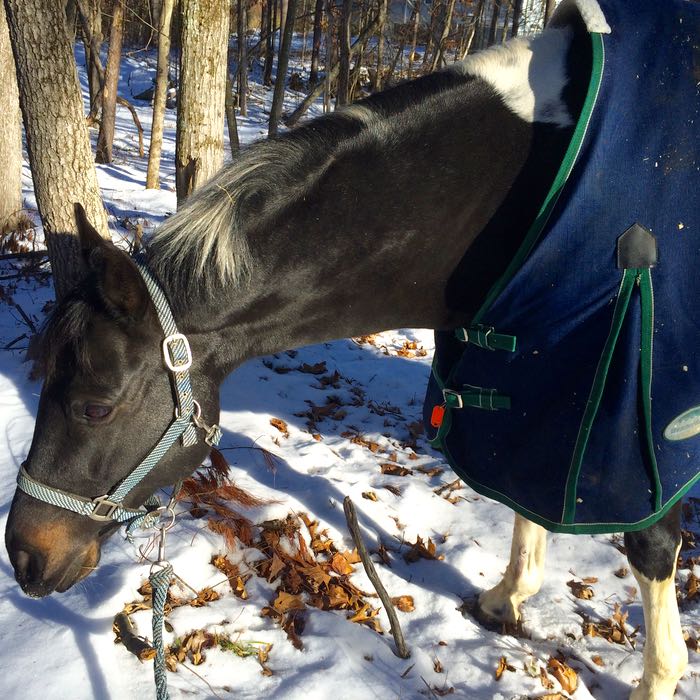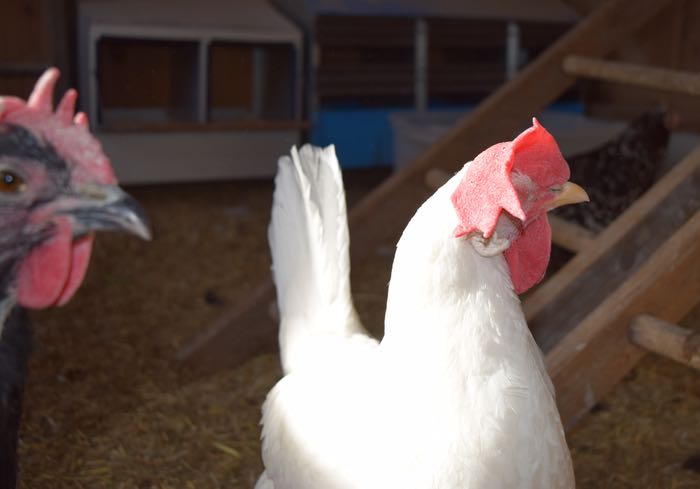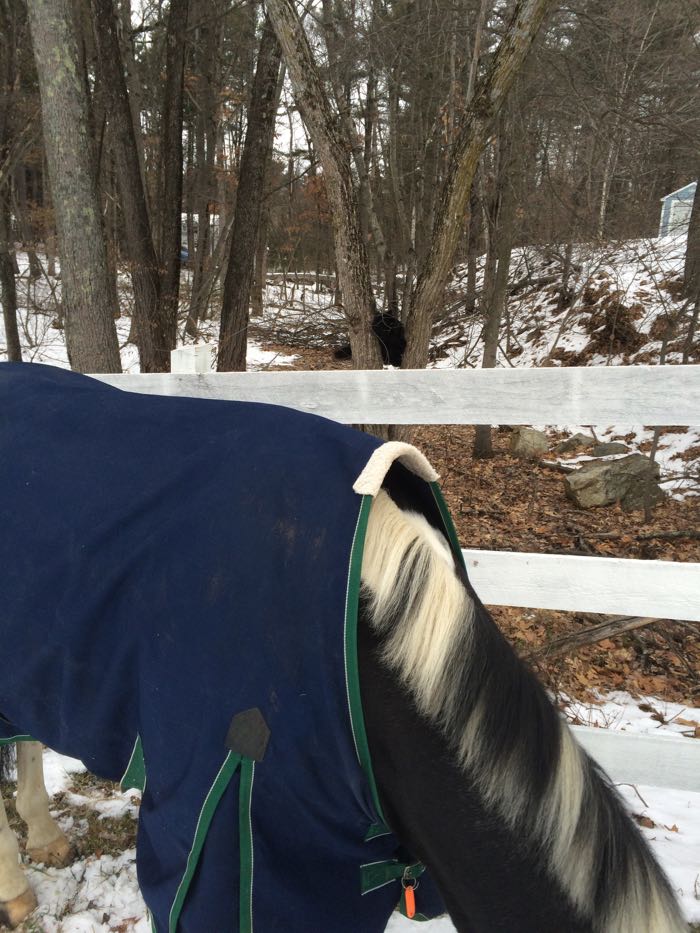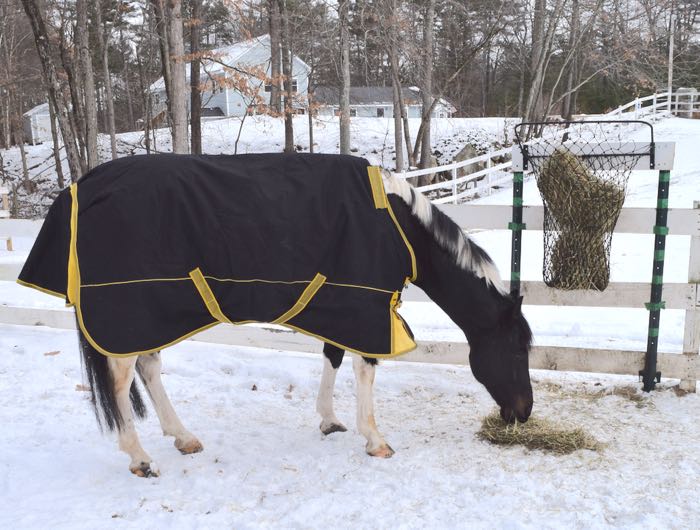There’s nothing interesting under the snow in Tonka’s paddock. It’s packed dirt.

A horse’s digestive system is designed to have a constant influx of small amounts of forage, and ideally that would be consumed while walking – about fourteen miles daily! Obviously, this isn’t possible for our horses. With animal care there are always compromises. A horse Tonka’s size eats about five flakes of hay a day. Where Tonka is boarded, that’s divided into four feedings, and the hay is put into special nets that slows consumption. That helps, but there are stretches of time when the hay is finished and there’s nothing to do. Even eating the hay probably gets boring. Horses don’t eat only grass. They also like bits of leaves from bushes and trees, and weeds like dandelions. There aren’t any of those interesting things to find and taste in the paddock.
The winter can be boring in other ways, too. Under that snow there is ice. Tonka has small cleats on his shoes to keep him from slipping, but it’s still too dangerous to ride outside.

Horses have to move (if they don’t their joint, circulatory and gut health are all aversely impacted) and so we move in the indoor. I ride daily, and I even keep track of how far we go with an app on my iPhone so as to make sure that he gets enough exercise. Most days we go around this small indoor up to 4 miles. I also take lessons weekly, so we’re doing interesting work, not simply going around in circles. When it’s too cold to ride (my tolerance for getting in the saddle stops at 18º F) I hand walk and lunge my horse.

Part of the reason that I have such a willing and happy horse is that we spend companionable time together. In the summer I hand-graze Tonka for at least a half-hour daily. We hang out while he contentedly bites and chews, and bites and chews. We both find this very peaceful. I ride daily in the summer, too, but we go on long trail rides at least weekly, have a choice of outside or indoor rings for schooling work, and always end the session with a stroll in the woods back of the barn.
So, Tonka and I are going a bit stir-crazy. That’s why I’ve been taking him on browsing walks.
The snow isn’t very deep this year, and back in the woods there are tufts of long grasses.

A few bites and Tonk looks up to see what else he can find. He meanders over.

Pine needles on a young sapling are delicious.

The snow has melted just enough that dormant grass is at the edges of the barnyard. We spend some time there.

As with so many things in life, it’s not the quantity of what you consume, but rather it’s the experience, that matters.



























